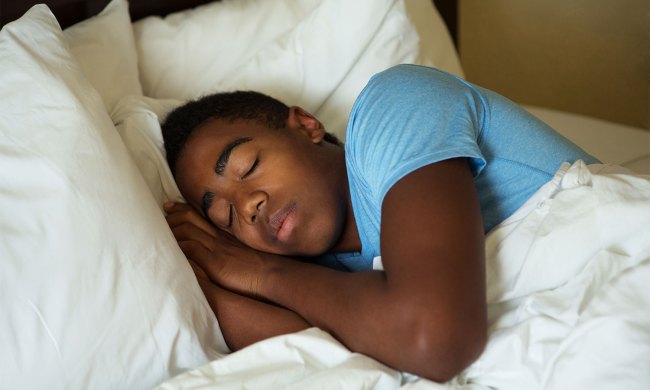Being a parent during these days of social media is impossible. Having to keep up with which trend just dropped to know if it’s dangerous is another job parents have. The Cinnamon Challenge. The Black Out Challenge. The Hot Pepper Challenge. What will pop up on TikTok next is anyone’s guess. The point is that these are life-threatening challenges — no matter how old you are — with teenagers as the group most likely to try a challenge the second it hits social media.
The newest trend to put parents on edge? Chroming. What is chroming? Learn about this TikTok trend and how to help your teen steer clear.
What is the Chroming Challenge?

In this round of what the heck are kids doing now is a TikTok trend called the Chroming Challenge. Chroming is inhaling a chemical substance to get high, and it has kids and teens going through the cabinets looking for household items to inhale.
Items used for chroming
- Permanent markers
- White-out
- Paint
- Paint thinner
- Gasoline
- Nail polish remover
- Hairspray
- Aerosol containers like deodorant
- Lighter fluid
Anything with a strong chemical smell could be used for chroming. The idea is to sniff it directly out of the container or soak a fabric item, like a rag or towel, and smell that with the chemical on it.
The purpose of chroming

Admit it — we’ve all had a whiff of something like a marker and been mesmerized by the scent for a second. But chroming is smelling the thing until you are intoxicated by it. The high from the chemical might give you a euphoric feeling for a minute, but there are way too many risks that come with it.
Possible side effects
- Cardiac arrest
- Brain damage
- Memory loss
- Impaired judgment
- Drop in IQ
- Kidney malfunction
- Burns if using a flammable substance or container
- Asphyxiation
- Death
The best case scenario if your kid tries it is your child gets sick, throws up, and then never wants to try chroming again. Unfortunately, as is the way with drugs, one time could also be all it takes for cardiac arrest or death. In March 2024, an 11-year-old child in the U.K. passed from cardiac arrest, as well as a 13-year-old in Australia in March 2023. The list of risks could happen after one use or continuous use, so it’s like playing a game of Russian roulette.
What to look out for
- Dizziness
- Vomiting
- Fainting
- Headaches
- Slurred speech
If you notice your child experiencing a change in speech, has difficulty walking, or passes out for no reason, and you find evidence of chroming, call Poison Control immediately!
Why chroming is trending on TikTok

Social media can be used for good or for evil, and in this case, it’s for evil, with kids paying the price. In 2017, the Substance Abuse and Mental Health Services Administration (SAMHSA) conducted a survey that found that in 2015, 684,000 children in the age range of 12 to 17 huffed or inhaled a chemical substance to try to get high. The Drug Enforcement Administration found one in five children have tried to huff or inhale a chemical by eighth grade.
Chroming, or huffing, or whatever else you want to call it, has been a popular trend with kids for over 15 years. It never went away. It’s just cycled back to the front of the line. While TikTok has tried to curb things, banning anyone from searching the words “chroming challenge 2024,” has already seen one chroming video hit over 700,000 views as recently as February.
How to handle chroming with your kids

At home, keep an eye on things. We’re not saying to lock up the nail polish remover, but know the products you have in your house that could be used for chroming and check on them regularly.
As with any drug use, it’s better to address it than pretend it doesn’t exist or that your child won’t try it. The best prevention is having an honest and open conversation. Even if you don’t think your kid has tried chroming, talking about it upfront will decrease their curiosity and lower their chance of trying it in the future.
It doesn’t matter if you think your child would never, ever think about trying it. If it’s on social media and your child has access to the internet, they could come across it. And if your child is in school, a classmate or kid in another grade could expose them to it. Give your child clear rules, expectations, and consequences about if they chrome, huff, or do any other drugs. Have the numbers for Poison Control and SAMHSA in your phone and accessible for the kids.
No parent wants their children to try any type of drug, whether that’s a cigarette, vaping, or alcohol. When the drugs are random items you could find in any home, it makes things so much scarier for parents. Throw in social media to fuel the fire, and parents need all the help they can get. Add the Chroming Challenge to the list of things you need to know about as a parent so you can keep your child safe.




